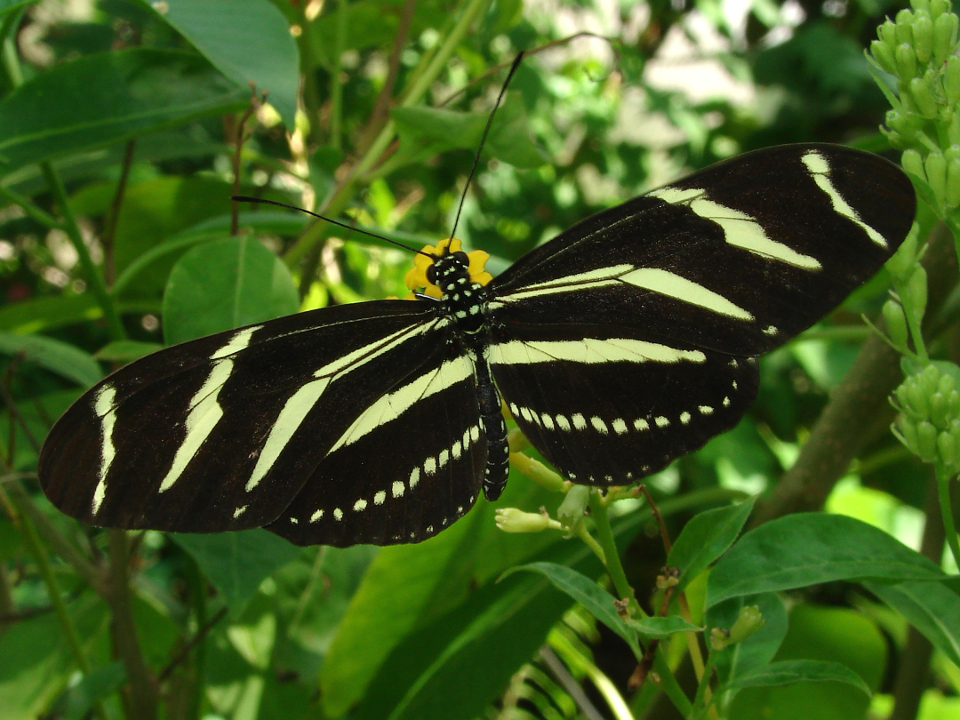Zebra longwing
by Jonnie Dietz, Florida Museum of Natural History
“Know your native pollinators” is a series of articles that will help you identify and appreciate Florida’s varied pollinators, including bees, wasps, butterflies, moths, beetles, flies, birds and bats. Pictured above: Zebra longwing (Heliconius charithonia) by Ryan Fessenden.
Zebra longwings are found throughout the state, but this common Florida butterfly is anything but ordinary!
CLASSIFICATION
Family: Nymphalidae (Brush-footed butterflies)
Species: Heliconius charithonia
FORAGING PREFERENCES
Butterflies lay their eggs on specific plants that they know their caterpillars will eat. Zebra longwings host on Passionflower:
- Corkystem passionflower (Passiflora suberosa)
- Purple passionflower, Maypop (Passiflora incarnata)
- Yellow passionflower (Passiflora lutea)
- White-flowered Multiflower or Keys passionflower (Passiflora multiflora)
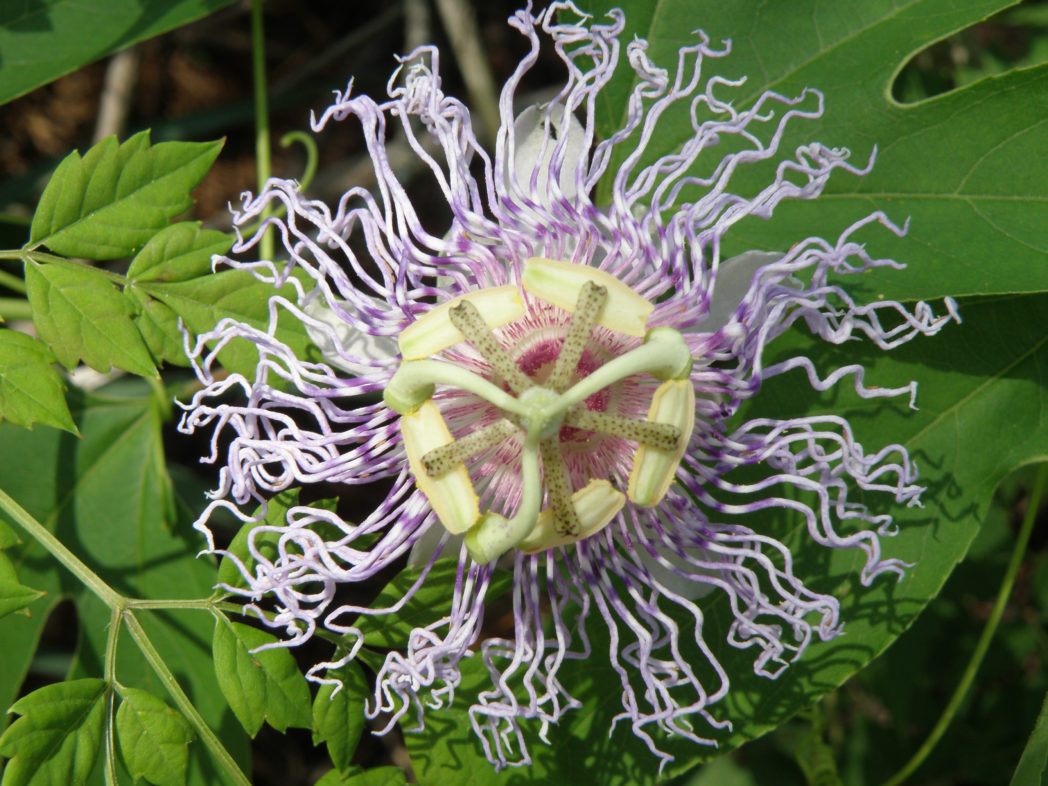
Butterflies will nectar on a variety of flowers. They prefer long, tubular flowers like Firebush (Hamelia patens) and Tropical sage (Salvia coccinea) as well as composites such as Spanish needles (Bidens alba) that allow them to land and rest while feeding. They are also especially fond of flowers in the Verbena family, including Mock vervain (Glandularia spp.), and Blue porterweed (Stachytapheta jamaicensis).
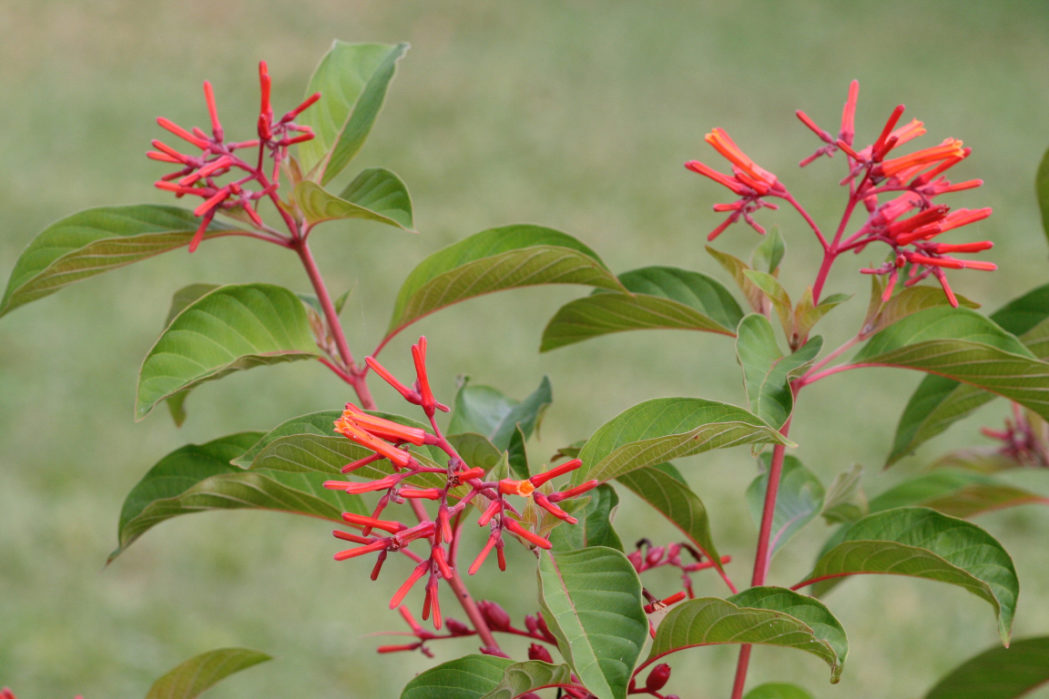
DID YOU KNOW?
The Zebra longwing is Florida’s official state butterfly!
IDENTIFICATION
Zebra longwings are found throughout the state and are a common garden visitor. Their elongated wings make them easy to distinguish from other Florida natives, but their unique attributes don’t stop there. Here are a few more qualities that make Zebra longwings really stand out:
LIFE CYCLE
Most adult butterflies live an average of 2–4 weeks, but longwings have a special trick that extends their lives by several months! While feeding on nectar, a longwing collects globs of sticky pollen on its proboscis. After enough pollen is collected, the butterfly will regurgitate digestive enzymes onto the pollen mass, breaking it down into a digestible, protein-rich supplement. This “pollen milkshake” contributes to the butterfly’s longevity, and aids in the production of eggs or sperm.
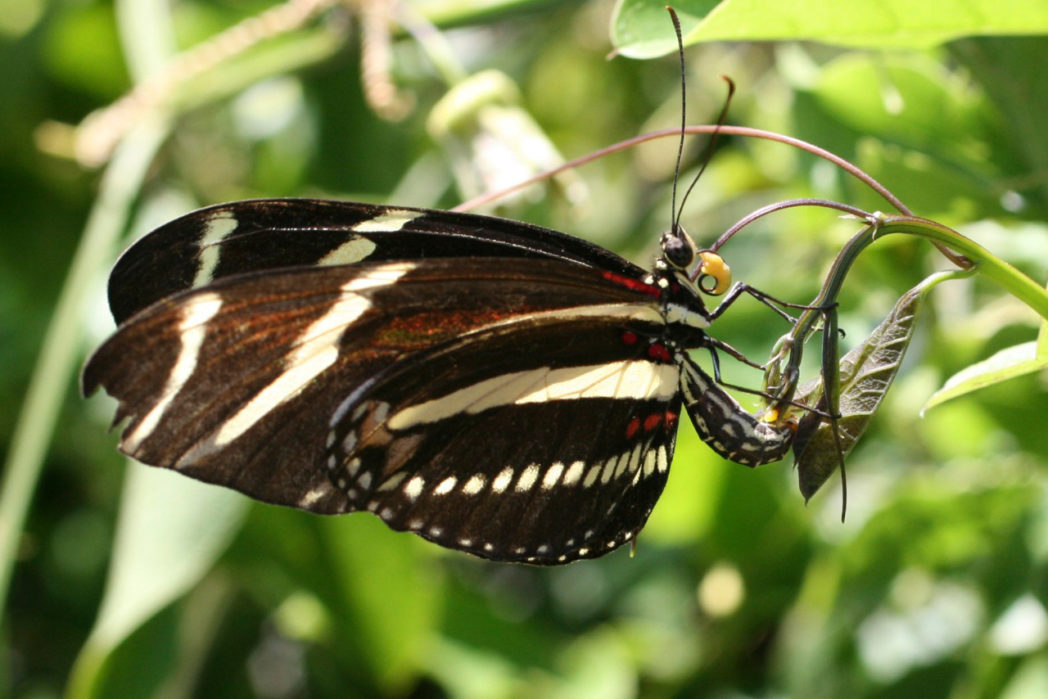
Can you see the yellow pollen on this butterfly’s proboscis? (She’s also laying an egg!) Photo by Adam Skowronski.
Zebra longwing chrysalides resemble a dead leaf and are not easy to spot… unless you’re a male longwing looking for love. Females play hard to get while transforming inside their chrysalis, but their pupae have a distinct scent that adult males are able to distinguish from the developing males. Once the male locates a chrysalis, he will repeatedly visit and perch on top of it, anxiously awaiting the female’s arrival. By the time she finally emerges, multiple males may have gathered on her chrysalis. After mating, the male applies a chemical to the female, which acts as a repellent to other interested suitors.
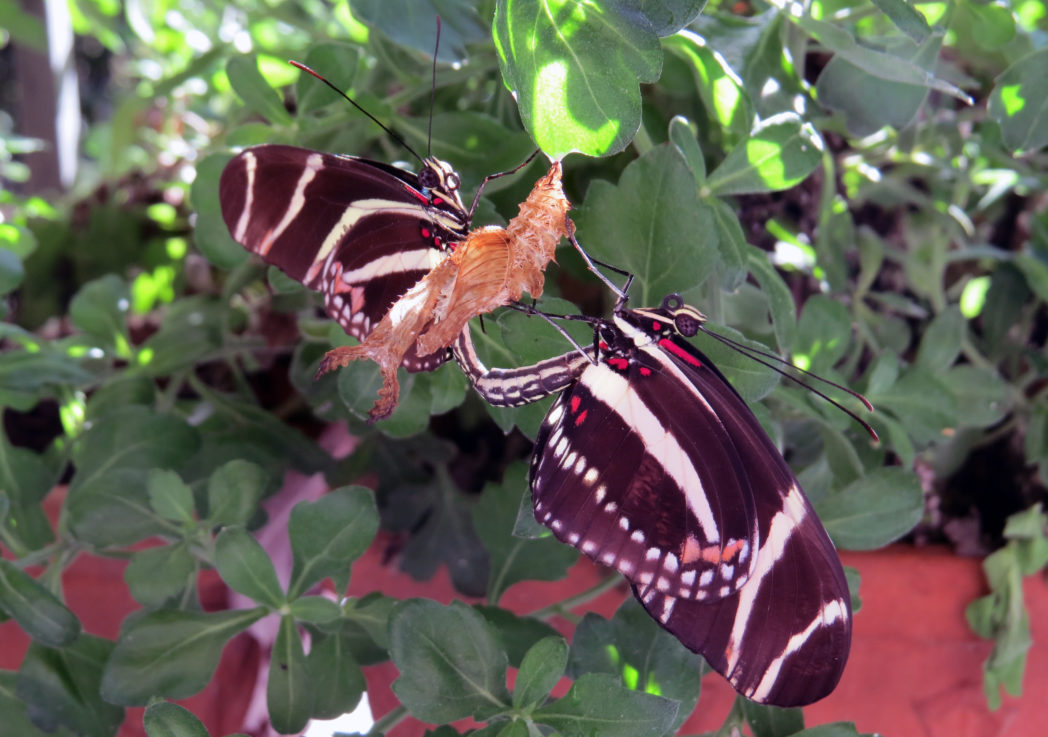
These butterflies are mating on the female’s empty chrysalis. Photo by Jonnie Dietz.
At night, Zebra longwings frequently roost together in groups. Up to 60 individuals may perch together on a branch, and they often return to the same place each evening.
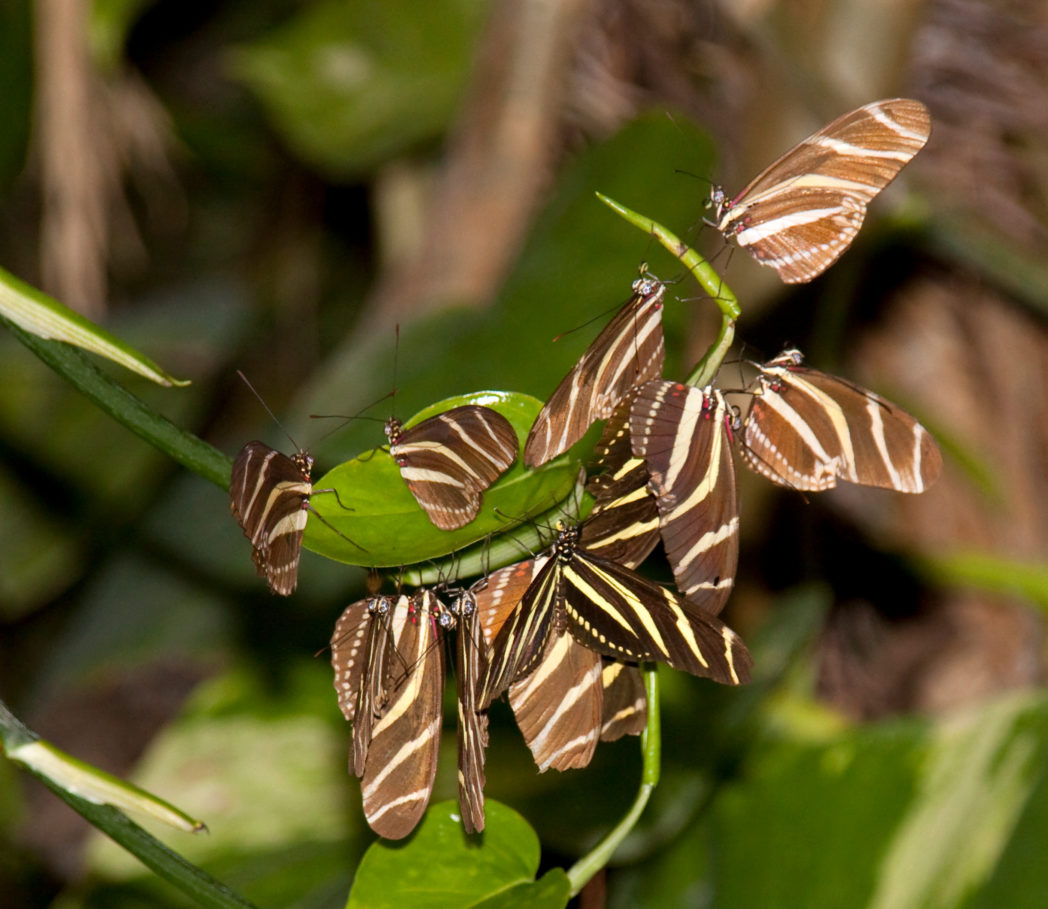
Zebra longwings roosting together for the night. Photo by Tony Hisgett.
Females lay small yellow eggs singly or in groups on the leaves and tendrils of their hostplants (Passiflora spp.).
Caterpillars are white with black dots and soft, black spikes. Their coloration signals that they contain distasteful chemicals, warning predators against eating them. Zebra longwing caterpillars will molt (shed their skin) five times before they pupate. Although unpalatable to their predators, Zebra longwing caterpillars are harmless to humans.
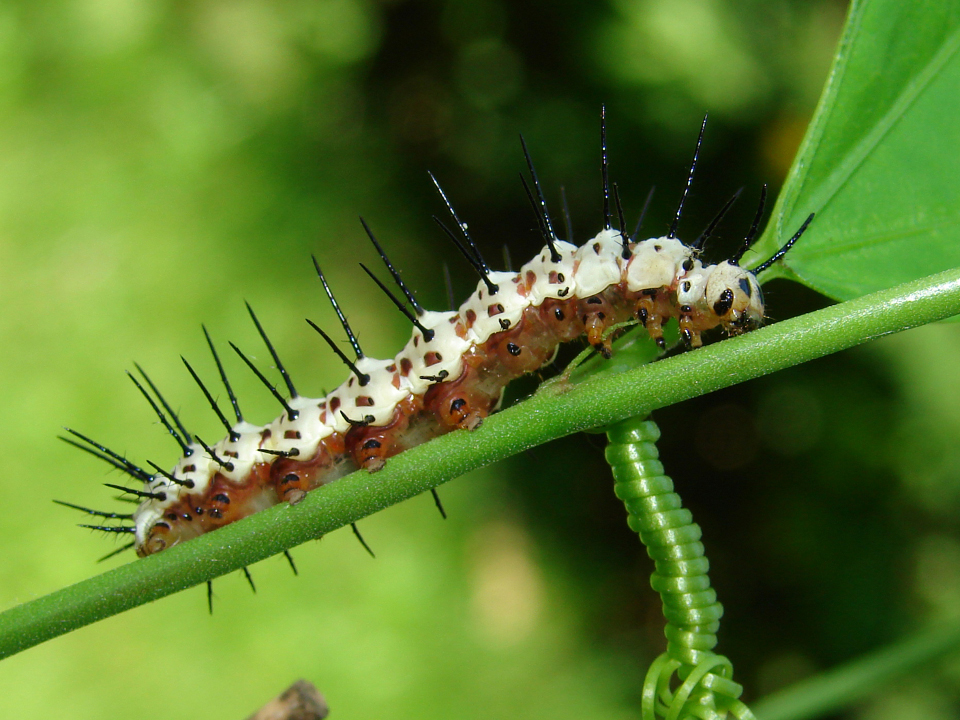
Adults have elongated wings and look unlike any other butterfly in Florida. Their black wings have yellow stripes — colors that advertise they, too, are distasteful to predators. Zebra longwings have multiple generations per year and will fly year round in South Florida.
Check out this video for more information about Zebra longwing butterflies!
References:
- Daniels, Jaret C. “Zebra Longwing, Heliconius charitonia (Linnaeus) (Insecta: Lepidoptera: Nymphalidae).” EDIS New Publications RSS, School of Forest Resources and Conservation, 20 Jan. 2015, edis.ifas.ufl.edu/in805.
- Emmel, Thomas C. Florida’s Fabulous Butterflies. World Publications, 1997. Print.
- Florida Museum. “Zebra Longwing.” Zebra Longwing: Florida Museum of Natural History, 17 Aug. 2017, www.floridamuseum.ufl.edu/100years/zebra-longwing/.

